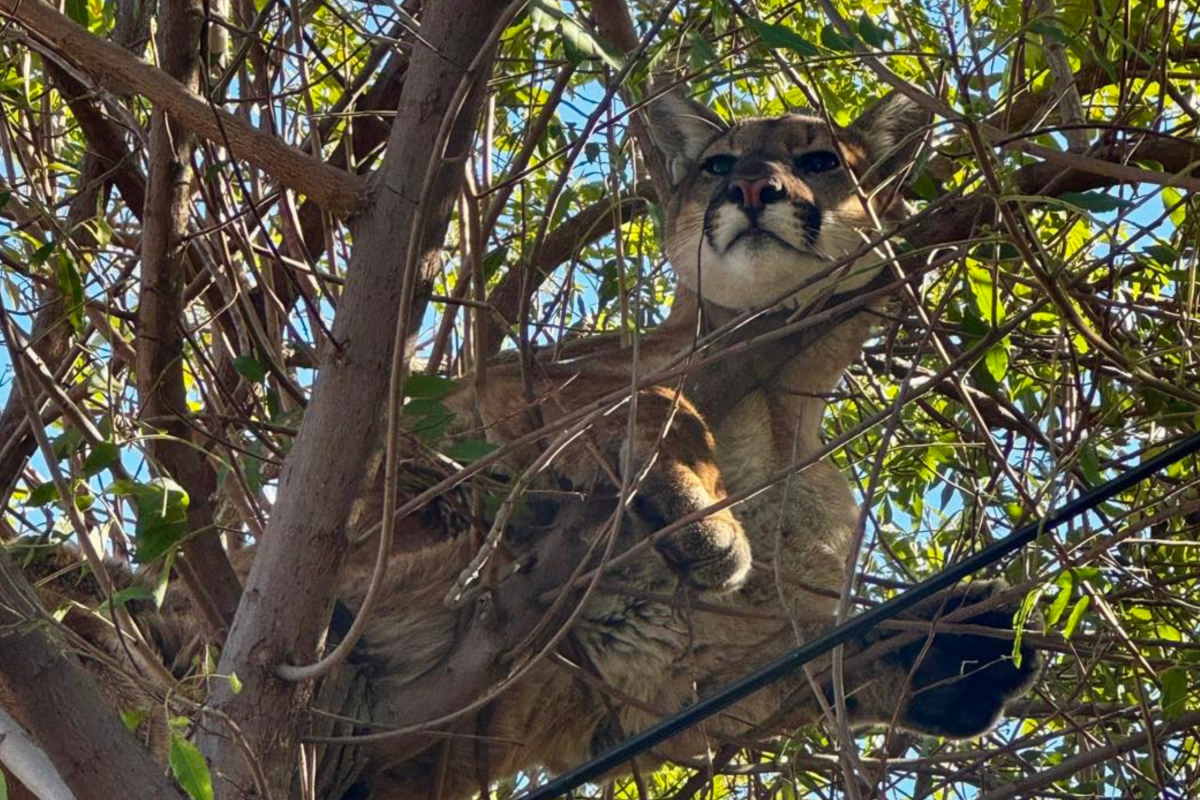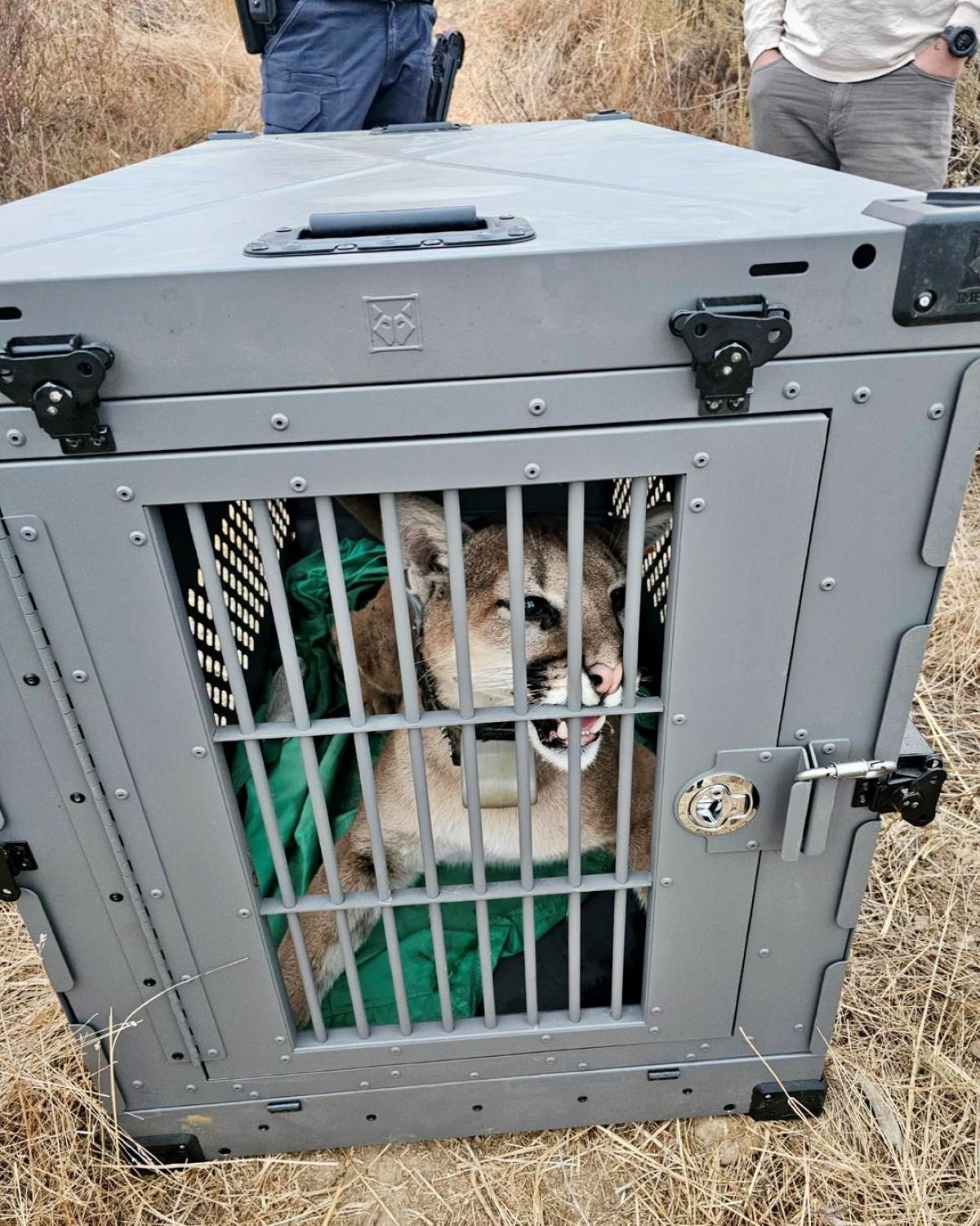In an unusual morning encounter, a family in Tustin, California, got quite a surprise when their dog's routine chase of what appeared to be a neighborhood cat turned out to be something far more wild—a mountain lion that ended up stuck in a tree.
"When they looked a little closer, this wasn't just any cat," the Tustin Police Department reported in a Facebook post detailing the incident Monday.
The discovery prompted a multi-agency response, bringing together the California Department of Fish and Wildlife, Mission Viejo Animal Services, OC Animal Care and Orange County Fire Authority.
Photos from the scene showed the mountain lion perched approximately 20 feet up in the tree, appearing surprisingly relaxed despite its predicament.

To ensure the safety of both the animal and first responders, wildlife officials made the decision to tranquilize the big cat.
"For the safety of the animal and first responders, the lion was tranquilized and removed from the tree," fire officials explained on Facebook. "Biologists from Fish & Game then provided care and prepared the cat for transport—first to a processing center and then back into the wild, albeit an area much further from civilization."
The story concluded with a happy ending as the mountain lion was successfully relocated to the Cleveland National Forest, far from residential areas.
While such encounters might seem alarming, experts suggest they're not entirely unexpected.
After a recent mountain lion encounter in Nebraska, Captain John Vik with the Lancaster County Sheriff's Office previously told Newsweek, "Like it or not, we share habitat with a wide variety of wildlife—mountain lions included."
Despite public perception of increasing urban wildlife encounters, research suggests mountain lions entering residential areas remain relatively rare.
A 2022 National Park Service study found that while mountain lions regularly use the chaparral and coastal sage scrub habitats around Los Angeles—a metropolis of 16 million people—they typically avoid heavily modified urban spaces like golf courses and cemeteries.
The apparent increase in sightings might be attributed to better surveillance technology rather than changing animal behavior.

"The proliferation of video doorbells and game cameras also increases the likelihood of spotting what are traditionally elusive animals," the study noted.
Authorities remind residents that mountain lions can be dangerous and should never be approached. Any encounters should be reported to local animal control or wildlife authorities immediately.
Mountain lions have an extremely broad range of habitats—anywhere where deer are present, according to the U.S. Forest Service.
While they can be dangerous, most mountain lions are not confrontational, and if given a route to escape, they will take it.
Anyone who does come into contact with a mountain lion is advised not to crouch or bend over, or attempt to run.
The U.S. Forest Service advises: "Do all you can to appear larger. Raise your arms. Open your jacket if you are wearing one. Wave your arms slowly and speak firmly in a loud voice."
Do you have a tip on a science story that Newsweek should be covering? Do you have a question about mountain lions? Let us know via science@newsweek.com.




















 English (US) ·
English (US) ·